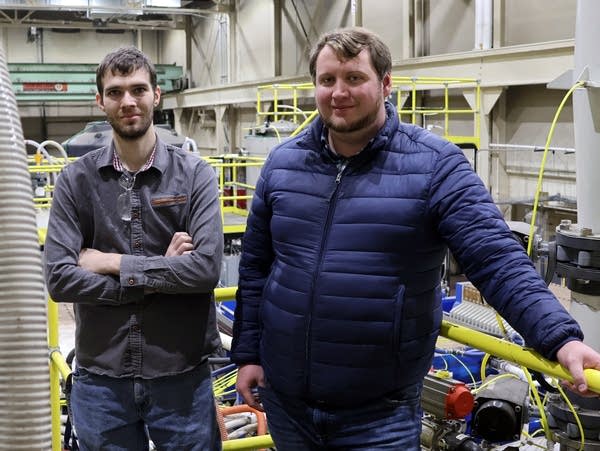North Dakota researchers find cost-effective way to extract rare-earth elements from coal

Nicholas Dyrstad-Cincotta (left) and Nolan Theaker stand on a catwalk in the Grand Forks, ND warehouse where rare earth elements are extracted from lignite coal using a newly developed process.
Dan Gunderson | MPR News
Go Deeper.
Create an account or log in to save stories.
Like this?
Thanks for liking this story! We have added it to a list of your favorite stories.


